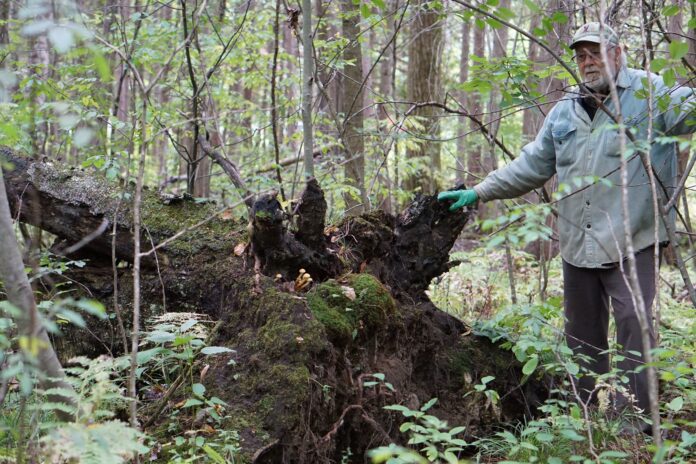by Philip Fry
A recent survey of Canadians concerning climate change and species loss found that 67% of its respondents were somewhat pessimistic about our prospects for the future. Of these, 14% thought that it’s already too late to change, and 80% did not understand what “nature-based solutions” means. Much of the apprehension we are feeling is probably due, not only to a sense of environmental loss, but also to the urgent need to limit much of our habitual use of energy at home and for transportation. None of that will be fun.
Instead of dwelling on restrictions, it is perhaps helpful to shift our focus to the positive, creative possibilities offered by discussing the poorly understood “nature – based solutions” we can practice in North Grenville. Many of us have a parcel of land confided to our care, perhaps the lot on which our home is situated, or a farm. All are integral parts of a landscape that has been unwittingly depleted in its biodiversity since colonial days. Our yards and farms – with notable exceptions – no longer function as components moderating the life-sustaining carbon cycle. Even if we do not have a property under our personal care, there are wetlands and forests in the Municipality to which we can attend. The trick is to think of our municipality and allotments not simply as places, but as habitats in which we are a living part. Nature-based solutions to the environmental crisis aim to enrich our habitat, helping it to function as a creative component of the carbon cycle while making our participation in it both intriguing and exciting.
Vestiges of nature as it was in the past are still found in North Grenville; they are our guide in approaching our future creatively. The process of habitat regeneration is complex and, after 40 years of often experimental work, I think it is likely an inexhaustible source of surprise. For practical purposes, we can distinguish five interdependent steps: observation, in which we make an effort to see what things are like with minimal interference on our part; wonder, in which we let ourselves be astonished by what we discover and ask ourselves how that could be; thought. by which we try to understand what this could mean to us, to others, and our mutual habitat; action, our adoption of new practices, even if they seem experimental and involve some degree of personal and social risk; and on-going assessment of what we are doing. There is much to discover and say about each of these steps, but for now, I will use as an example what foresters call “the pit and mound structure.”
When you take a walk in old, forested area, you will find that you are often stepping up and down in what seems to be “bumpy” terrain. The ups and downs are due to the accumulation of litter from trees and under-storey plants in various stages of decomposition, which slowly releases CO2 and provides nutrients for future growth of the forest. Integral to this process is the formation created when a tree is uprooted and blown over by the wind. A hole is formed where the tree’s roots were pulled up from the mineral soil; the roots, standing vertical, contain mineral soil that will mix with decaying litter, and the trunk lies horizontally, forming a barrier that catches and collects fallen leaves. The result is a pit and mound formation which is a veritable factory of nutrition and biodiversity. In spring, the pit is a vernal pond, home for insects and amphibians; the vertical roots shed the mineral soil they have “mined,” providing important trace nutrients; the trunk, a carbon sink, decays slowly, contributing CO2 to the life cycle. The structure collects, absorbs, and releases water, moderating runoff.
What are we to think of this? The structure’s ecological benefits disappear when we clear and flatten the forest to make our homes and farms. What, indeed, can we do about flatness? This forum is open to answers. If you have creative suggestions, I’m at wildflowerguy@gmail.com, and I will include them in the next instalment of CO2 Down to Earth.






